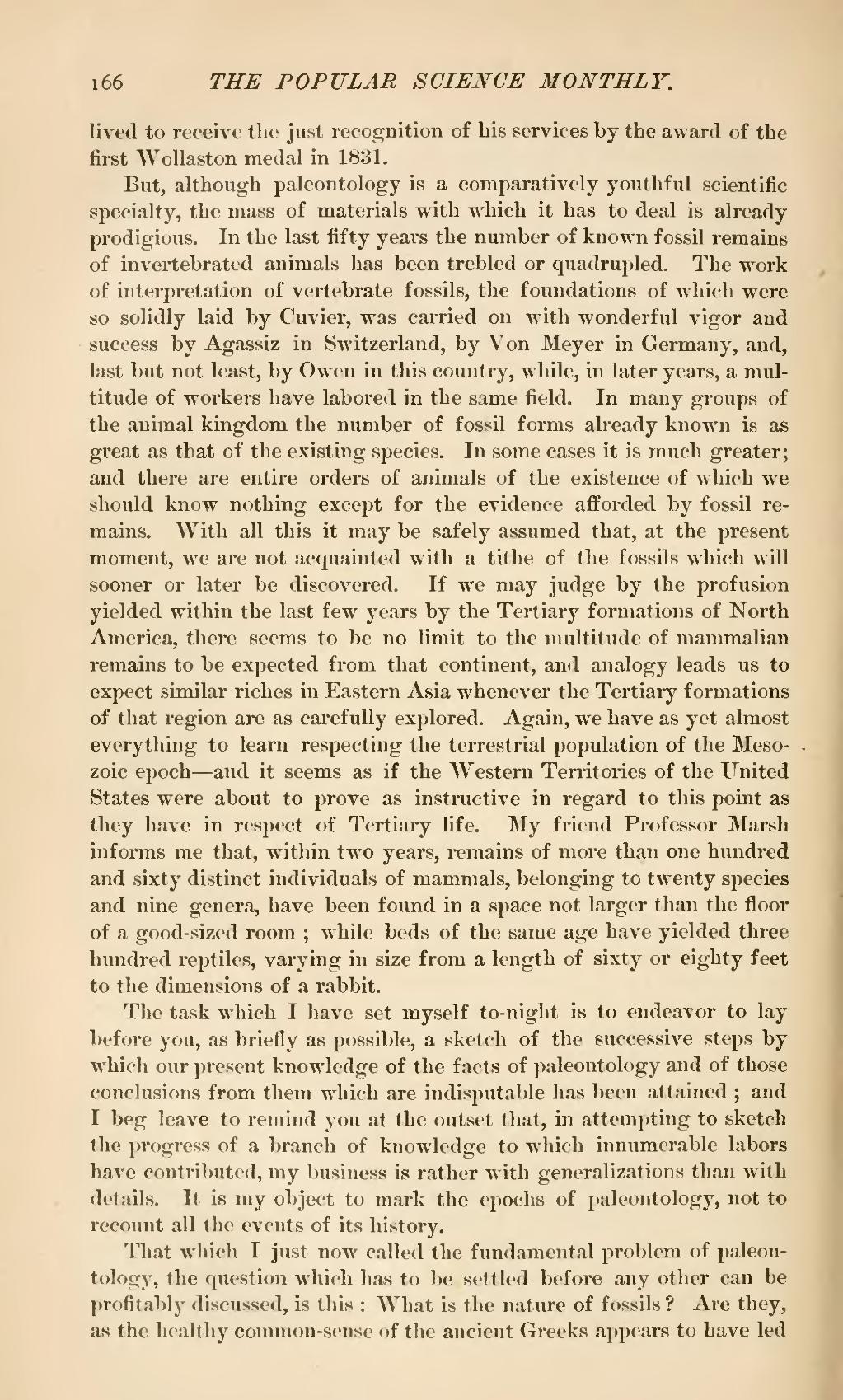lived to receive the just recognition of his services by the award of the first Wollaston medal in 1831.
But, although paleontology is a comparatively youthful scientific specialty, the mass of materials with which it has to deal is already prodigious. In the last fifty years the number of known fossil remains of invertebrated animals has been trebled or quadrupled. The work of interpretation of vertebrate fossils, the foundations of which were so solidly laid by Cuvier, was earned on with wonderful vigor and success by Agassiz in Switzerland, by Von Meyer in Germany, and, last but not least, by Owen in this country, while, in later years, a multitude of workers have labored in the same field. In many groups of the animal kingdom the number of fossil forms already known is as great as that of the existing species. In some cases it is much greater; and there are entire orders of animals of the existence of which we should know nothing except for the evidence afforded by fossil remains. With all this it may be safely assumed that, at the present moment, we are not acquainted with a tithe of the fossils which will sooner or later be discovered. If we may judge by the profusion yielded within the last few years by the Tertiary formations of North America, there seems to be no limit to the multitude of mammalian remains to be expected from that continent, and analogy leads us to expect similar riches in Eastern Asia whenever the Tertiary formations of that region are as carefully explored. Again, we have as yet almost everything to learn respecting the terrestrial population of the Mesozoic epoch—and it seems as if the Western Territories of the United States were about to prove as instructive in regard to this point as they have in respect of Tertiary life. My friend Professor Marsh informs me that, within two years, remains of more than one hundred and sixty distinct individuals of mammals, belonging to twenty species and nine genera, have been found in a space not larger than the floor of a good-sized room; while beds of the same age have yielded three hundred reptiles, varying in size from a length of sixty or eighty feet to the dimensions of a rabbit.
The task which I have set myself to-night is to endeavor to lay before you, as briefly as possible, a sketch of the successive steps by which our present knowledge of the facts of paleontology and of those conclusions from them which are indisputable has been attained; and I beg leave to remind you at the outset that, in attempting to sketch the progress of a branch of knowledge to which innumerable labors have contributed, my business is rather with generalizations than with details. It is my object to mark the epochs of paleontology, not to recount all the events of its history.
That which I just now called the fundamental problem of paleontology, the question which has to be settled before any other can be profitably discussed, is this: What is the nature of fossils? Are they, as the healthy common-sense of the ancient Greeks appears to have led
